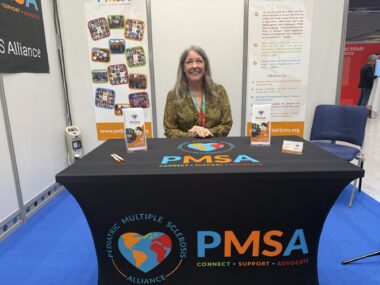Gilenya, Tysabri Show Superiority at Preventing Relapses in Children
Written by |

Gilenya (fingolimod) and Tysabri (natalizumab) were more effective at lowering relapse rates in children with multiple sclerosis (MS) than interferon-beta, according to a recent meta-analysis.
Findings like these can be leveraged for better clinical trial design, the researchers wrote. If used to determine “historical” relapse rates that could serve in trial analyses, fewer children would need to be placed on lower efficacy therapies, like interferon-beta, as part of a trial comparison group, they added.
“Our meta-analysis suggests that relapse rates are approximately fivefold higher with [interferons] than with [Gilenya] or [Tysabri],” the researchers wrote, adding that, in the future, “innovative trials will improve the feasibility of recruitment and avoid the use of low-efficacy treatments as comparators in pediatric studies.”
The study, “Improving pediatric multiple sclerosis interventional phase III study design: a meta-analysis,” was published in the journal Therapeutic Advances in Neurological Disorders.
MS is usually diagnosed in adulthood, but an estimated 5%–10% of cases are diagnosed before age 16. While the disease biology is similar in adult and pediatric MS, the disease is linked to higher relapse rates and a faster progression in children.
However, few randomized and controlled trials have systematically tested the efficacy of MS therapies in pediatric populations. While currently required to do so in the U.S. and European Union, those in planning stages or ongoing “compete for a small pool of available patients, which causes feasibility constraints,” the researchers wrote.
“The testing of new drugs in classical randomized controlled clinical trials,” requiring placebo or comparator patient groups, also “poses ethical and feasibility challenges and calls for more innovative trial designs,” they added.
To support such innovation, an international team of researchers examined data from previously published studies that had evaluated the effects of three MS therapies — Tysabri, Gilenya, and interferon-beta — on relapse rates in children with relapsing-remitting MS.
Biogen’s Tysabri has not been approved for pediatric patients, but is used off-label in some children. Novartis’ Gilenya is approved in the U.S. for children ages 10 and older, a decision supported by data from the Phase 3 PARDIGMS trial (NCT01892722), which showed that Gilenya was superior to interferon-beta at preventing relapses.
Interferon-beta therapies are a standard first-line treatment for pediatric MS, and are often used to evaluate the relative efficacy of newer therapies in clinical trials, the researchers noted.
Their analysis included 19 studies — 12 of interferon-beta, two of Gilenya, and five of Tysabri. One testing interferon-beta and one testing Gilenya were randomized controlled trials; the remaining 17 were observational studies.
Patients’ mean age ranged from 11 to 16.7 years across the studies, and their mean disease duration ranged from 0.4 to 5.1 years.
Treatment efficacy was evaluated using the annualized relapse rate (ARR), a measure of the number of relapses per year.
At baseline, or prior to treatment initiation, the mean ARR ranged from 1.4 to 3.7 for studies in which the information was available.
Results showed that Gilenya and Tysabri led to lower ARRs than interferon-beta. Across all the studies, the estimated overall ARR for interferon-treated patients was 0.69, or more than one every other year.
This rate was about five times higher than those observed with Gilenya or Tysabri, whose estimated ARRs were 0.11 and 0.17, respectively. Gilenya reduced the ARR by 83% across studies, while Tysabri lowered it by 76%.
“This meta-analysis summarizes our knowledge of relapse rates in pediatric patients treated with [interferons], [Gilenya], and [Tysabri] using currently available information and can inform new trials in pediatric MS,” the researchers wrote, adding that the findings raise “concerns on the use of [interferon-beta] as a comparator in pediatric participants in future trials.”
Existing data like those analyzed here can be leveraged to better design clinical trials for children with MS. For example, they can be used to determine historical relapse rates typically observed with existing therapies.
In future trials, the effectiveness of potential treatments can be compared against those historical rates. This way, fewer children will need to be recruited to the study, and fewer will need to be given a less effective comparator as treatment.
In developing this historical dataset, all available data should be considered, the team noted. Due to similarities in disease biology, “it is possible to extrapolate adult data to children. Therefore, in the setting of pediatric MS relevant, data from adult studies should be included,” the researchers wrote.
The high variability observed across the studies due to their observational nature mark one limitation to the analysis, the team noted.






